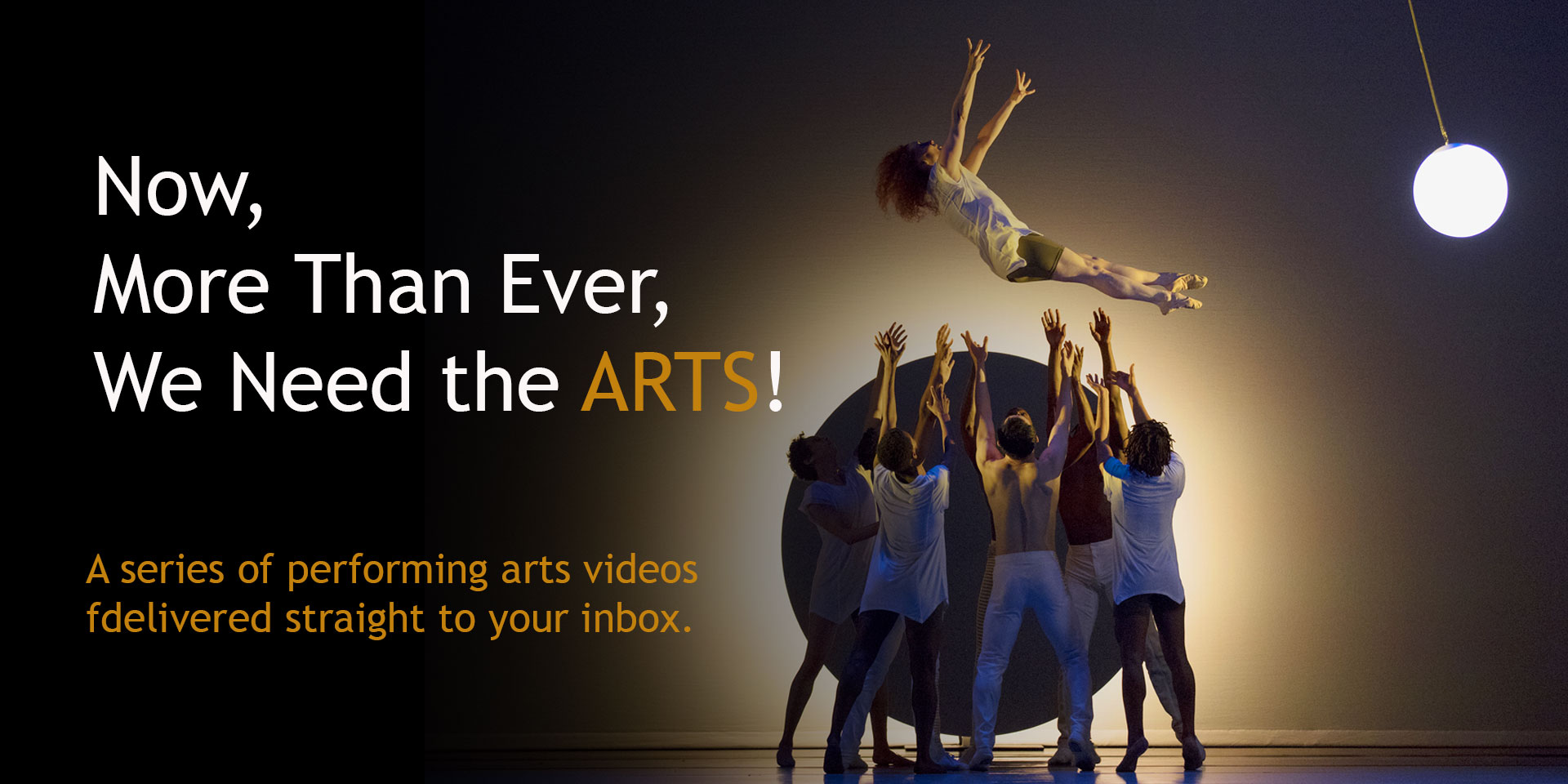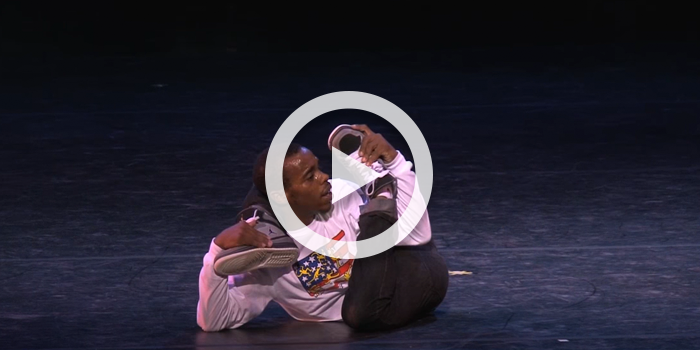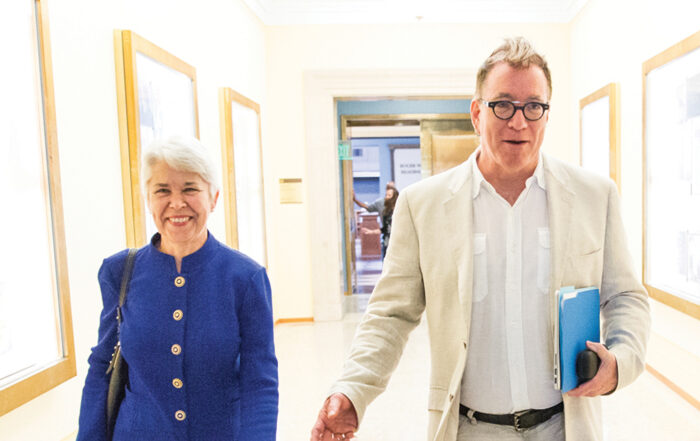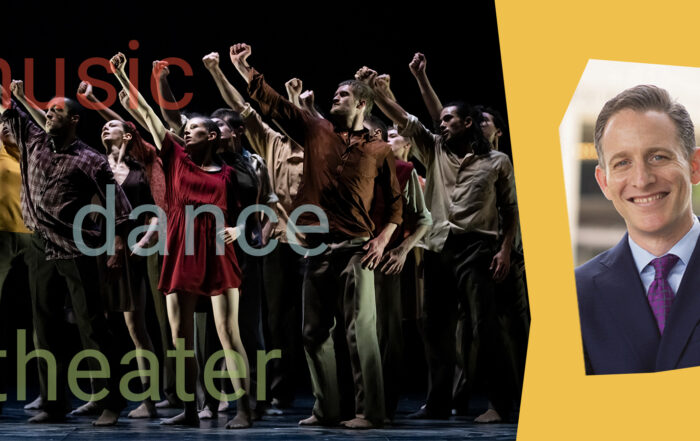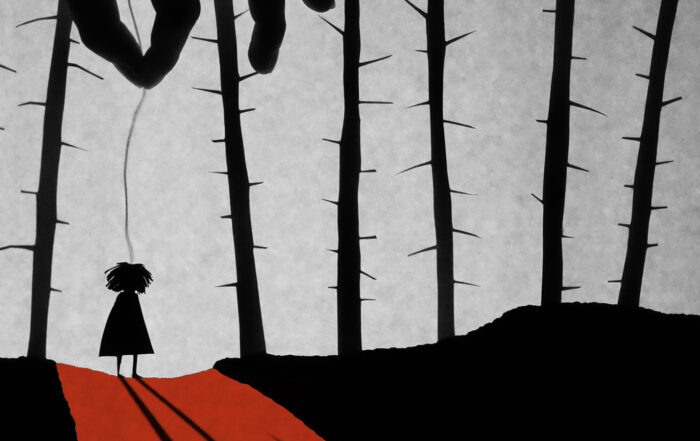In this issue: Victoria de los Ángeles and Orchestre Lamoureux/Canteloube’s “Baïlèro” from Chants d’Auvergne; Jazzmeia Horn/“Tight”; Michelle Dorrance at the 2014 Stockholm Tap Festival; Christian Tetzlaff and Lars Vogt/Brahms’ Scherzo from the FA-E Sonata; Jacqueline du Pré and the English Chamber Orchestra/Haydn’s Allegro molto from Cello Concerto No. 1 in C major, Hob. VIIb/1
Now, More Than Ever: Issue 5
Canteloube: “Baïlèro” from Chants d’Auvergne
Victoria de los Ángeles, soprano
Orchestre Lamoureux
Jean-Pierre Jacquillat, conductor
I no longer have a physical CD collection—a few years ago, I digitized everything—but when I did, one of my most-often-played discs was soprano Victoria de los Ángeles’ captivating renditions of these charming folk songs from France’s Auvergne region, as adapted and orchestrated by Joseph Canteloube. This piece, which features sympathetic accompaniment from the Orchestra Lamoureux under the direction of Jean-Pierre Jacquillat, is a particular favorite, sung by a young woman encouraging a handsome shepherd to tend his flock on her side of the river. It’s one of the most serene, simple, and contemplative works I know.
De los Ángeles had a storied career between the end of WWII and the 1970s. Unusually for a Spanish singer, she was known primarily as a concert performer—in recitals and with orchestra—and through a handful of signature opera roles that she would occasionally bring out. What makes this recording so affecting? I think it’s the sheer luxury of the sound of her voice coupled with the disarming simplicity of her musical approach.
“Tight”
Jazzmeia Horn
Far at the other end of the vocal spectrum, here’s a live studio session with the young Jazzmeia Horn, winning over the hearts of music lovers everywhere in the quintessential Betty Carter staple “Tight.” Horn’s ebullience—the unbound joy of her music-making—shines out, especially in her liberated, improvisational scat singing. (A style made famous by Carter and Ella Fitzgerald, among others, scat singing employs the voice in a very instrumental way, as something abstract and separate from the text the singer might otherwise be trying to communicate.) Julius Rodriguez has an admirably hot piano solo here. And it gives me more pleasure than I can say to tell you that, as far as I know, Jazzmeia Horn is actually her given name!
Michelle Dorrance
Stockholm Tap Festival 2014
For dance that is the choreographic equivalent of scat singing, look no further than the brilliant Michelle Dorrance, an artist who excels in finding joy and sound in the moment. This is improvisational art of the highest order, and Dorrance brilliantly demonstrates that there is extraordinary music to be found in the toes, balls, and heels of our feet. Sadly, one of her best pieces, SOUNDspace, was to have been performed at Cal Performances last month but her company’s sold-out Zellerbach Playhouse run was among the first cancellations of the current shutdown.
Two side notes: There was a time in my life when, had anyone told me that I would take such joy in watching seven minutes of tap dancing, I would never have believed it. And secondly, another reason for including this video is a note I received from my mother after sharing with her some earlier choices for these communications: “Darling, tap dance, please!”
Brahms: Scherzo from the F-A-E Sonata
Christian Tetzlaff, violin
Lars Vogt, piano
We’re fortunate that the source of this video footage—an August 2015 recital by violinist Christian Tetzlaff and pianist Lars Vogt—was recorded for later commercial audio release, if only for what occurs about four minutes into the performance. This is the Scherzo from an interesting collaborative work by Robert Schumann, the young Johannes Brahms, and Schumann’s pupil Albert Dietrich in Düsseldorf in October 1853. Schumann had conceived the sonata as a gift to the violinist Joseph Joachim, a friend who had adopted the phrase “Frei aber einsam” (“Free but lonely”) as his personal motto. With this in mind, the composers chose to structure their composition as a musical cryptogram, basing the work’s three movements on the musical notes F, A, and E (also the phrase’s initials). Brahms penned this movement.
The performance here is impressive on a musical level and everything seems to be going fine until an unplanned incident occurs. (I won’t say anything else, although the YouTube video title does give away the surprise.) And if you think this will be the only accident, just keep watching. In the pantheon of ungrateful roles, page turner is near the top, but this just shows that without the right one, the performance is sunk. It’s only fitting that Tetzlaff and Vogt give Anna Reszniak (also an accomplished violinist) a bow at the end.
Haydn: Allegro molto from Cello Concerto No. 1 in C major, Hob. VIIb/1
Jacqueline du Pré, cello
English Chamber Orchestra
Daniel Barenboim, conductor
I love listening to performers for whom the physical act of making sound communicates their sheer exuberance and love for the music itself.
This has been one of my go-to, happy-place recordings for a long time; if joy exists as a sound file, this would be it. There are so many nuances in du Pré’s performance—and every thought is beautifully shaded and personally inflected, yet still faithful to the composer’s intent. Because the cellist was diagnosed with multiple sclerosis at the age of 28, almost all of our recordings of her—a significant catalogue of music—pre-date that period. Playing of this quality serves as a touching reminder that, at a time when her career was going well, du Pré took time off from performing to study in Russia with Rostropovich, who famously said that she was the only artist worthy of claiming his mantle.

Over the last few days, a video clip of a (very) young conductor has been making the rounds over e-mail. (I have received it at least five times from different sources.) A toddler identified as Zubin Mehta’s grandson (though we are not able to confirm this) is shown “conducting” a performance he is watching on a laptop of the Polovtsian Dances from Borodin’s opera Prince Igor. Without a doubt this kid has extraordinary talent and we should all approach life with such joy and lack of inhibition. We could not find the video to which he is reacting, but for reference, here is one of Valery Gergiev conducting a performance of the work.
Now, More Than Ever Full Playlist
Now, More Than Ever Spotify Playlist


